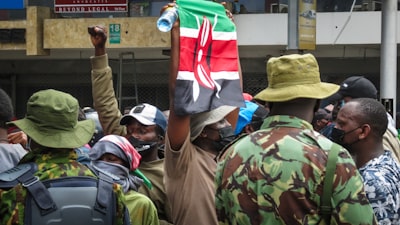Summary:
Kenya finds itself in a deepening crisis as President William Ruto adopts increasingly hardline rhetoric and tactics against nationwide protests. Following demonstrations marked by destruction and, alarmingly, the deaths of at least 31 people in a single day (and 51 in two months), President Ruto ordered police to shoot protesters targeting businesses in the legs, rather than aiming to kill. The protests, which began over proposed tax hikes, have broadened into calls for wider political reform and Ruto’s resignation. Economic stagnation, government corruption, and repeated incidents of police brutality have increased public anger. Opposition leaders accuse the government of deploying state-sponsored violence, while Ruto frames the demonstrators as violent extremists attacking the foundations of the state.
Analysis:
The Kenyan government’s response points to systemic issues that go well beyond the current protests. Decades of frustration due to economic struggles, unfulfilled political promises, and entrenched corruption have bred a climate of distrust between citizens and the state. The president’s statement – calling for police to intentionally maim rather than simply disperse – reveals a disturbing normalization of state violence which could have far-reaching social and ethical consequences.
This approach also risks heightening tensions, making future dialogue or reconciliation more difficult. Ruto’s rhetoric equates protestors’ actions not just with civil disorder but “war” and “terrorism,” a framing that delegitimizes civic dissent and opens the door to further repression. There’s a notable absence of acknowledgement of police abuses, including the alleged killing and abduction of civilians, which further skews the narrative in the government’s favor.
Internationally, condemnation from agencies like UNICEF and the UN underline the seriousness of state violence, especially when it claims the lives of children or leads to broad violations of basic rights. Such critiques often put additional pressure on the Kenyan state, but history suggests international outcry alone rarely brings fast change.
Discussion:
Why does this matter? Kenya’s current turmoil reflects a broader African – and global – trend where youthful, digitally connected populations demand more accountability and economic justice, only to face harsh government pushback. The specific character of these protests – youth-driven, leaderless, and less tied to traditional party politics – widens the gulf between old-guard leaders and new-generation aspirations.
Ruto’s struggle is both realpolitik and existential: He must control unrest to maintain political legitimacy, yet his chosen methods risk deepening the very grievances at the heart of the unrest. The invocation of “terrorism” to describe domestic protest is a well-worn tactic used worldwide to suppress dissent, but in Kenya’s historically volatile context, such framing could escalate conflict rather than contain it.
The episode should prompt reflection on how societies balance the imperatives of security and pluralism, and on the need for independent oversight of security forces. It also raises the question: What will it take for African leaders to engage with protestors not as enemies, but as citizens seeking a voice and a stake in their country’s future? The narrative arc unfolding in Kenya – of protest, repression, and political polarization – is a cautionary tale that resonates far beyond its borders, highlighting the ongoing struggle for democratic accountability in the 21st century.

Comments
No comments yet. Be the first to comment!